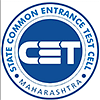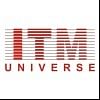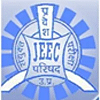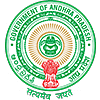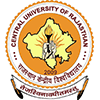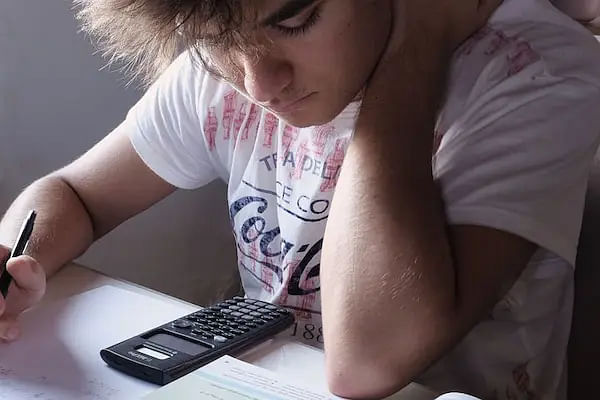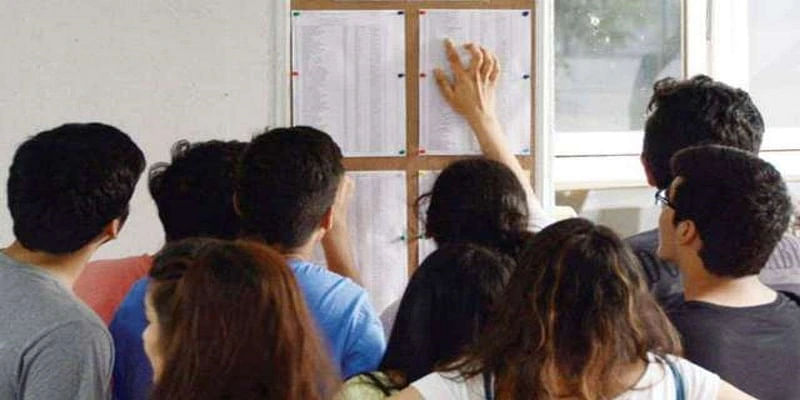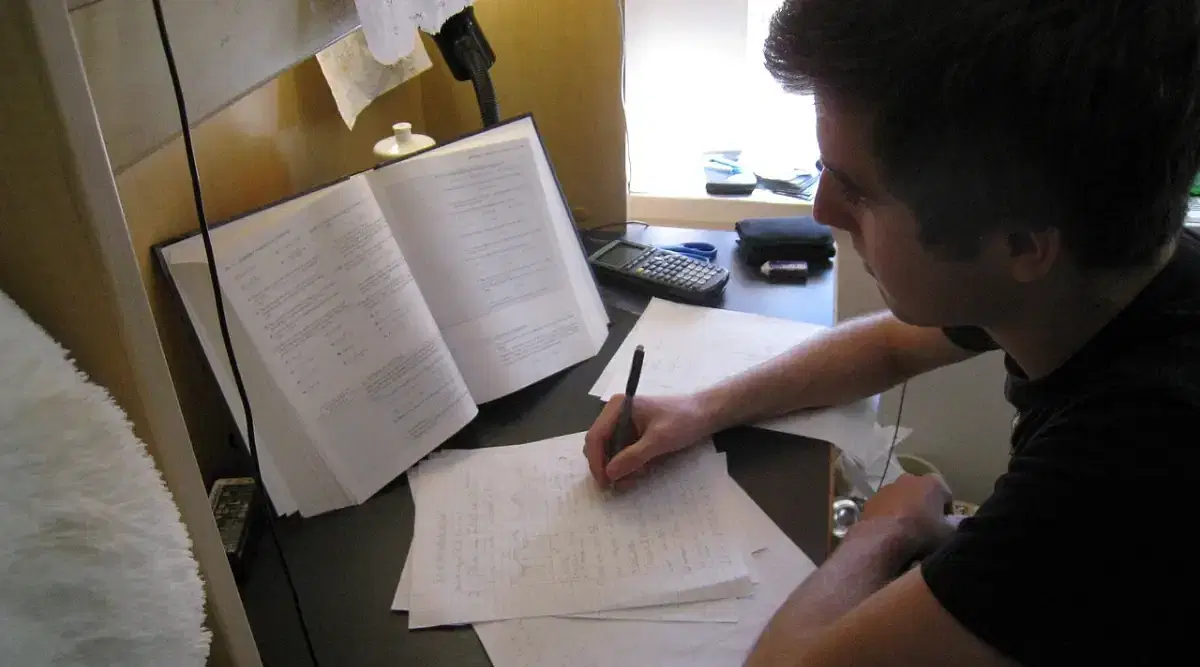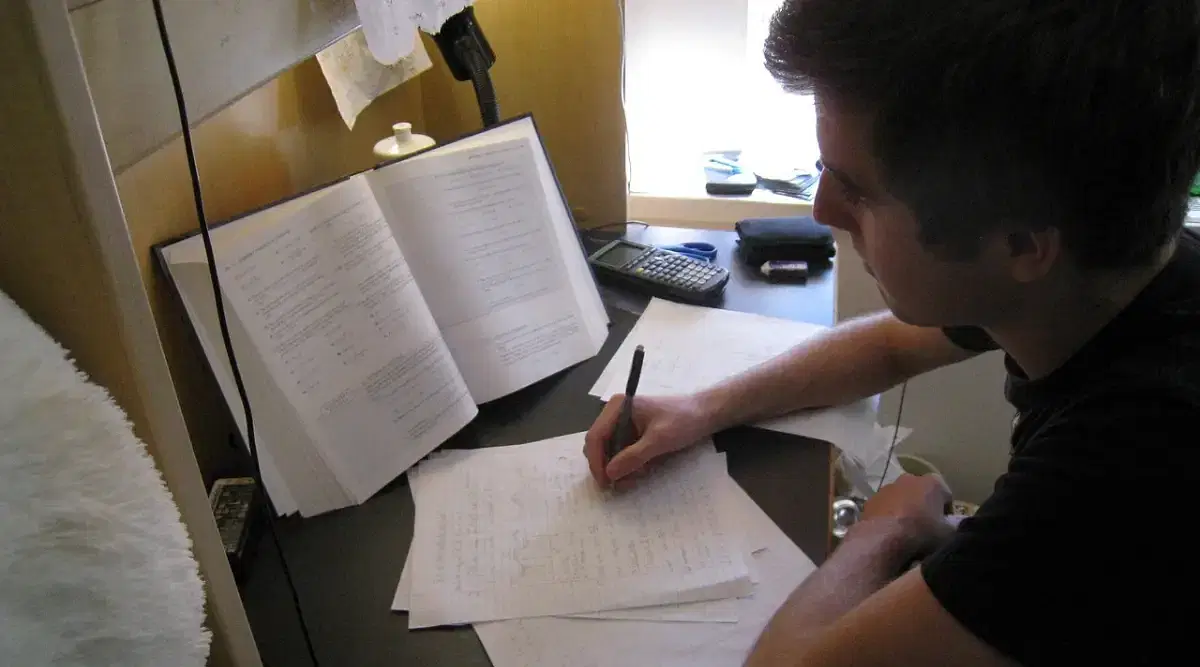
Table of Contents
MHT CET Physics Syllabus 2025 includes essential topics such as Oscillations, Rotational Motion, Electrostatics and more. The physics syllabus for the MHT CET 2025 has been set by the Maharashtra State Common Entrance Test Cell.
The MHT CET Physics syllabus 2025 is the same for the PCM and PCB courses. In the MHT CET exam, the questions in the physics section will carry one mark each. The topic-wise weightage of the MHT CET 2025 physics syllabus is given in detail on the page below.
MHT CET Physics Syllabus 2025 PDF
The PDF will include detailed information regarding the MHT CET Physics Syllabus 2025. Candidates can check the link to download the MHT CET Syllabus 2025 in the table given below:
| MHT CET Physics Syllabus PDF | Download PDF |
Also Read: How to Score 150+ in MHT CET 2025 for B.Tech Admission?
MHT CET 2025 Physics Syllabus
The physics syllabus for the MHT CET exam includes subjects and topics from the 11th and 12th standards. The topics included in the MT CET physics syllabus are given below:
MHT CET Physics Class 11th Topics
1. Measurements
- Introduction,
- Need for measurement,
- Units for measurement,
- System of Units, S.I. Units,
- Fundamental and derived units,
- Dimensional analysis,
- Order of magnitude and significant figures,
- Accuracy and errors in measurement.
2. Scalars and Vectors
- Addition and subtraction of vectors,
- Product of vectors.
3. Force
- Types of forces,
- General idea of gravitation,
- electromagnetic and nuclear forces,
- Law of conservation of momentum,
- Work done by a variable force
- Workenergy theorem
- Elastic and inelastic collisions in one and two dimensions,
- Inertial and non-inertial frames,
- Moment of force,
- Couple and properties of couple,
- Centre of mass,
- Centre of gravity,
- Conditions of equilibrium of a rigid body
4. Friction in solids and liquids
- Origin and nature of frictional forces,
- Laws of static friction,
- Laws of kinetic friction,
- Pressure due to fluid column,
- Pascal’s Law and its applications,
- Effect of gravity on fluid pressure,
- Viscosity, Streamline flow,
- Turbulent flow,
- Viscous force,
- Newton’s formula,
- Stokes’ law,
- Equation for terminal velocity,
- Raynold’s number,
- Bernoulli’s principle and its applications.
5. Refraction of Light
- Refraction of monochromatic light,
- Snell’s law,
- Total internal reflection,
- Critical angle,
- Optical fibre,
- Dispersion of light,
- Prism formula,
- Angular dispersion and dispersive power,
- Rainbow,
- Scattering of light,
- Blue colour of sky,
- Colour of sun at sunrise and sunset
- Elementary idea of Raman effect.
6. Ray optics
- Reflection of light by spherical mirrors,
- Refraction at single curved surface,
- Lens maker’s equation,
- Combination of thin lenses in contact,
- Concept of conjugate focii,
- Correction of eye defects,
- Magnifying power of simple microscope,
- Magnifying power of compound microscope,
- Magnifying power of telescope,
- Reflecting telescope - schematic diagram with explanation
7. Magnetic effect of electric current
- Oersted’s experiment,
- Biot Savart’s law,
- Right hand rule,
- Magnetic induction at the centre of circular coil carrying current,
- Magnetic induction at a point along the axis of a coil carrying current,
- Fleming’s left hand rule,
- Force between two infinitely long current carrying parallel conductors,
- Definition of Ampere,
- Force acting on a conductor carrying current in magnetic field,
- Torque on a current loop in magnetic field.
8. Magnetism
- Origin of magnetism due to moving charges,
- Equivalence between magnetic dipole and circular coil carrying current,
- Definition of magnetic dipole moment and its unit,
- Torque acting on a magnet in uniform magnetic induction,
- Bar magnet as an equivalent solenoid,
- Magnetic field lines,
- Magnetic induction due to bar magnet at a point along the axis and at a point along equator,
- Earth’s magnetic field and magnetic elements,
- Electromagnets and factors affecting their strength.
Also Read: MHT CET Career Options 2025
MHT CET Physics Class 12th Topics
1. Circular motion
- Angular displacement,
- Angular velocity and angular acceleration,
- Relation between linear velocity and angular velocity,
- Uniform circular motion,
- Radial acceleration,
- Centripetal and centrifugal forces,
- Banking of roads,
- Vertical circular motion due to earth’s gravitation,
- Equation for velocity and energy at different positions of vertical circular motion
- Kinematical equations for circular motion in analogy with linear motion.
2. Rotational motion
- Definition of M.I., K.E. of rotating body,
- Rolling motion,
- Physical significance of M.I.,
- Radius of gyration, Torque,
- Principle of parallel and perpendicular axes,
- M.I. of some regular shaped bodies about specific axes,
- Angular momentum and its conservation.
3. Oscillations
- Explanation of periodic motion,
- S.H.M.,
- Differential equation of linear S.H.M.
- Projection of U.C.M. on any diameter,
- Phase of S.H.M.,
- K.E. and P.E. in S.H.M.,
- Composition of two S.H.M. 's having the same period and along the same line,
- Simple pendulum, Damped S.H.M.
4. Gravitation
- Newton’s law of gravitation,
- Projection of satellite,
- Periodic time,
- Statement of Kepler’s laws of motion,
- Binding energy and escape velocity of a satellite,
- Weightlessness condition in orbit,
- Variation of ‘g’ due to altitude,
- latitude, depth and motion,
- Communication satellite and its uses
5. Elasticity
- General explanation of elastic property,
- Plasticity,
- Deformation,
- Definition of stress and strain,
- Hooke’s law, Poisson’s ratio,
- Elastic energy,
- Elastic constants and their relation,
- Determination of ‘Y’, Behaviour of metal wire under increasing load,
- Applications of elastic behaviour of materials.
6. Electrostatics
- Gauss’ theorem proof and applications,
- Mechanical force on unit area of a charged conductor,
- Energy density of a medium,
- Dielectrics and electric polarisation,
- Concept of condenser,
- Capacity of parallel plate condenser,
- Effect of dielectric on capacity,
- Energy of charged condenser,
- Condensers in series and parallel,
- van-deGraaff generator
7. Wave Motion
- Simple harmonic progressive waves,
- Reflection of transverse and longitudinal waves,
- Change of phase,
- Superposition of waves,
- Formation of beats,
- Doppler effect in sound.
8. Magnetism
- Circular current loop as a magnetic dipole,
- Magnetic dipole moment of revolving electron,
- Magnetisation and magnetic intensity,
- Diamagnetism,
- Paramagnetism,
- Ferromagnetism on the basis of domain theory,
- Curie temperature.
9. Surface Tension
- Surface tension on the basis of molecular theory,
- Surface energy,
- Surface tension,
- Angle of contact,
- Capillarity and capillary action,
- Effect of impurity and temperature on surface tension
10. Wave Theory of Light
- Wave theory of light,
- Huygens’ Principle,
- Construction of plane and spherical wave front,
- Wave front and wave normal,
- Reflection at plane surface,
- Refraction at plane surface,
- Polarisation,
- Polaroids,
- Plane polarised light,
- Brewster’s law,
- Doppler effect in light
11. Stationary Waves
- Study of vibrations in a finite medium,
- Formation of stationary waves on string,
- Study of vibrations of air columns,
- Free and Forced vibrations, Resonance.
12. Kinetic Theory of Gases and Radiation
- Concept of an ideal gas,
- Assumptions of kinetic theory,
- Mean free path,
- Derivation for pressure of a gas,
- Degrees of freedom,
- Derivation of Boyle’s law,
- Thermodynamics- Thermal equilibrium and definition of temperature,
- 1st law of thermodynamics,
- 2nd law of thermodynamics,
- Heat engines and refrigerators,
- Qualitative idea of black body radiation,
- Wein’s displacement law,
- Greenhouse effect,
- Stefan’s law, Maxwell distribution,
- Law of equipartition of energy and application to Specific heat capacities of gases.
13. Interference and Diffraction
- Interference of light,
- Conditions for producing steady interference pattern,
- Young’s experiment,
- Analytical treatment of interference bands,
- Measurement of wavelength by biprism experiment,
- Diffraction due to single slit,
- Rayleigh’s criterion,
- Resolving power of a microscope and telescope,
- Difference between interference and diffraction.
14. Current Electricity
- Kirchhoff’s law, Wheatstone’s bridge,
- Meter bridge, Potentiometer
15. Magnetic Effects of Electric Current
- Ampere’s law and its applications,
- Moving coil galvanometer,
- Ammeter,
- Voltmeter,
- Sensitivity of moving coil galvanometer,
- Cyclotron.
16. Electromagnetic Inductions
- Laws of electromagnetic induction,
- proof of, e = – dØ dt Eddy currents,
- Self induction and mutual induction,
- Need for displacement current,
- Transformer,
- Coil rotating in uniform magnetic induction,
- Alternating currents,
- Reactance and impedance,
- LC oscillations 154 (qualitative treatment only) Power in a.c circuit with resistance,
- inductance and capacitance,
- Resonant circuit,
- Wattless current,
- AC generator.
17. Electrons and Photons
- Photoelectric effect,
- Hertz and Lenard’s observations,
- Einstein’s equation,
- Particle nature of light
18. Atoms, Molecules and Nuclei
- Alpha particle scattering experiment,
- Rutherford’s model of atom
- Bohr’s model,
- Hydrogen spectrum,
- Composition and size of nucleus,
- Radioactivity,
- Decay law,
- mass energy relation,
- mass defect,
- B.E. per nucleon and its variation with mass number,
- Nuclear fission and fusion,
- de Broglie hypothesis,
- Matter waves – wave nature of particles,
- Wavelength of an electron,
- Davisson and Germer experiment,
- Continuous and characteristics X-rays.
19. Semiconductors
- Energy bands in solids,
- Intrinsic and extrinsic semiconductors,
- P-type and N Type semiconductor,
- P-N junction diode,
- I-V characteristics in forward and reverse bias,
- Rectifiers,
- Zener diode as a voltage regulator,
- Photodiode,
- Solar cell,
- I-V characteristics of LED,
- Transistor action and its characteristics,
- Transistor as an amplifier (CE mode),
- Transistor as a switch,
- Oscillators and Logic gates (OR, AND, NOT, NAND, NOR)
20. Communication Systems
- Elements of communication system,
- bandwidth of signals,
- bandwidth of transmission medium,
- Need for modulation,
- Production and detection of an amplitude modulated wave,
- space communication,
- Propagation of electromagnetic waves in atmosphere.
Also Read: MHT CET Passing Marks 2025
MHT CET Exam Pattern for Physics
The MHT CET 2025 Physics Syllabus is included only in the PCM courses. Candidates can find details regarding the MHT CET Exam Pattern 2025 for both down below:
MHT CET Exam Pattern for PCM
The exam pattern for PCM is given below:
- For the physics and chemistry section, questions will carry 1 mark each.
- Questions in the mathematics section will carry 2 marks each.
- The exam will be 3 hours long.
- There is no negative marking for wrong answers.
| Subjects | Number of Questions |
| Physics | 50 |
| Chemistry | 50 |
| Mathematics | 50 |
Also Read: Is There Negative Marking in MHT CET?
Topic-Wise MHT CET Physics Syllabus Weightage
The weightage for important topics covered in the MHT CET Physics Syllabus 2025 is given below:
| Important Topics | Weightage |
| Kinetic Theory Of Gases And Radiation | 12% |
| Oscillations | 8% |
| Atoms, Molecules, And Nuclei | 8% |
| Rotational Motion | 7% |
| Electrostatics | 7% |
| Magnetic Effects Of Electric Current | 6% |
| Electromagnetic Induction | 6% |
| Semiconductors | 6% |
| Wave Motion | 5% |
| Magnetism | 5% |
| Circular Motion | 4% |
| Surface Tension | 4% |
| Interference And Diffraction | 4% |
| Current Electricity | 4% |
Books for MHT CET Physics Preparation
The following are some crucial books that candidates can use for MHT CET 2025 preparation:
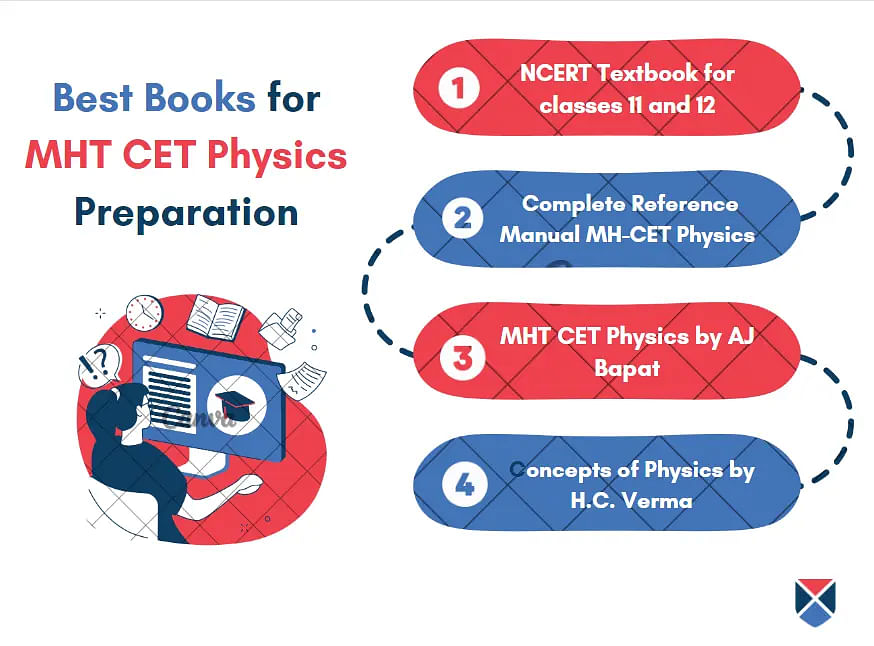
The following table mentions the names of the MHT CET Books recommended by experts:
| Name of the books | Name of Authors/ Publications |
| NCERT Textbook for classes 11 and 12 | NCERT |
| Complete Reference Manual MH-CET Physics | Arihant Publication |
| MHT CET Physics | AJ Bapat |
Also Read: List of Colleges for 1000 to 5000 Rank in MHT CET
Preparation Tips for MHT CET Physics Syllabus
A few tips regarding the MHT CET Physics Syllabus 2025 are given below for the candidates to help them prepare better for the exam.
- It is advised to go through the syllabus carefully. Many topics can be missed while preparing.
- The best way to study the physics syllabus will be to solve MHT CET's previous year's question papers. This can help in understanding the main topics of the syllabus.
- Solving mock tests and sample papers can help candidates revise the MHT CET physics syllabus.
- Searching for study material online on YouTube can help candidates understand concepts they cannot understand on their own. Channels such as Physics Gyaan Mukesh Nayak or Gyan Lab can help.
